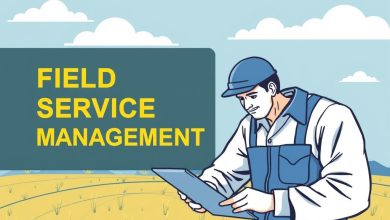Field Service Management with Risk Scoring Enhancing Operational Efficiency and Customer Satisfaction
Introduction
Field Service Management (FSM) is a critical component of many industries, including utilities, telecommunications, HVAC, and manufacturing. It involves managing and coordinating the activities of technicians who provide services directly to customers at their premises. However, FSM comes with inherent risks such as equipment damage, injury to workers, and customer dissatisfaction. This article explores how risk scoring can enhance Field Service Management practices, leading to improved efficiency, safety, and customer satisfaction.
The Importance of Risk Scoring in Field Service Management
Risk scoring is a crucial aspect of modern business operations, particularly in high-risk environments like field service management. By assigning numerical values to potential hazards, organizations can prioritize tasks, allocate resources effectively, and minimize exposure to dangerous situations. In the context of FSM, risk scoring helps identify areas where extra precautions are necessary and allows for more informed decision-making when dispatching technicians to job sites.
Benefits of Implementing Risk Scoring
- Enhanced Safety: Risk scoring enables companies to identify potentially hazardous locations or jobs before sending technicians. This proactive approach helps reduce the likelihood of accidents and ensures a safer work environment.
- Improved Efficiency: By prioritizing high-risk jobs, organizations can optimize resource allocation, reducing response times and improving overall operational efficiency.
- Better Customer Experience: Risk scoring allows companies to communicate more accurately with customers about potential issues or delays related to high-risk jobs, setting realistic expectations and maintaining transparency.
- Cost Reduction: While implementing a risk scoring system may require initial investment, it can lead to significant cost savings in the long run by minimizing accidents, equipment damage, and unnecessary overtime.
How Risk Scoring Works in Field Service Management
Implementing a risk scoring system in FSM involves several key steps:
- Data Collection: Gather relevant data points about each job, including location, weather conditions, equipment type, and technician experience level.
- Risk Factor Identification: Determine which factors contribute to potential hazards or complications during the job.
- Scoring Algorithm Development: Create a formula to assign numerical values to identified risk factors based on their severity and probability.
- Continuous Monitoring and Adjustment: Regularly review and refine the risk scoring model to ensure its accuracy and effectiveness.
Key Components of a Risk Scoring System
A robust risk scoring system for FSM typically includes:
- Location-based scoring: Assign higher scores to jobs in areas known for high crime rates, extreme weather conditions, or other safety concerns.
- Equipment-specific scoring: Consider the complexity and potential danger associated with specific types of equipment being used on the job.
- Technician expertise scoring: Account for the skill level and experience of assigned technicians, as more experienced workers may handle risky situations better.
- Weather-related scoring: Adjust scores based on current and forecasted weather conditions, especially for outdoor jobs.
- Job history analysis: Incorporate data from previous similar jobs to predict potential challenges or risks.
Case Study: Implementing Risk Scoring in a Utility Company
Let’s consider a hypothetical utility company called Green Energy Services (GES), which provides electrical maintenance and repair services across a large metropolitan area. GES decided to implement a risk scoring system to improve safety and efficiency in their field operations.
Initial Implementation Steps
- Data Collection: GES gathered historical data on job types, locations, and outcomes over a three-year period.
- Risk Factor Identification: Based on the collected data, GES identified key risk factors including:
- Job location (residential vs. commercial)
- Type of electrical work required
- Time of day/night
- Seasonal variations
- Technicians' years of experience
3. Scoring Algorithm Development: GES developed a weighted scoring algorithm considering all identified factors. For example:
- Job location: 30% weight
- Type of electrical work: 25%
- Time of day/night: 15%
- Seasonal variations: 10%
- Technicians' experience: 20%
4. Risk Score Calculation: Using this algorithm, GES calculated a risk score for each upcoming job. A higher score indicated a greater potential for complications or safety issues.
Results and Impact
After implementing the risk scoring system, GES observed significant improvements:
- Reduced Accidents: The number of reported incidents decreased by 35% over six months.
- Improved Response Times: High-risk jobs were prioritized, resulting in faster resolution of critical issues.
- Enhanced Customer Satisfaction: Customers received more accurate estimates and updates, leading to increased trust and loyalty.
- Cost Savings: By optimizing resource allocation and reducing unnecessary overtime, GES achieved a 12% decrease in operational costs.
Challenges and Limitations
While risk scoring offers numerous benefits, there are some challenges to consider:
- Data Accuracy: The effectiveness of a risk scoring system heavily relies on the quality and completeness of input data. Inaccurate or outdated information can lead to misclassification of risks.
- Complexity: Developing and maintaining a sophisticated risk scoring algorithm requires significant expertise and ongoing refinement.
- Bias Concerns: There’s always a risk of bias creeping into the scoring system, either intentionally or unintentionally. Regular audits and reviews are essential to mitigate this issue.
- Technological Dependence: Many risk scoring systems rely on digital platforms and data analytics tools, which can create vulnerabilities if not properly secured.
Conclusion
Field Service Management with Risk Scoring represents a powerful combination for enhancing operational efficiency, improving safety standards, and delivering superior customer experiences. By leveraging advanced data analytics and predictive modeling techniques, organizations can transform their field service operations into more intelligent, responsive, and risk-aware entities.
As technology continues to evolve, we can expect even more sophisticated risk scoring models to emerge. These advancements will likely incorporate machine learning algorithms, real-time data feeds, and AI-driven insights to further refine risk assessment capabilities.
For field service managers looking to implement or improve their risk scoring systems, it’s crucial to stay abreast of industry trends, invest in robust data infrastructure, and continuously monitor and adjust their scoring models. By doing so, they can position their organizations at the forefront of efficient, safe, and customer-centric field service delivery.




